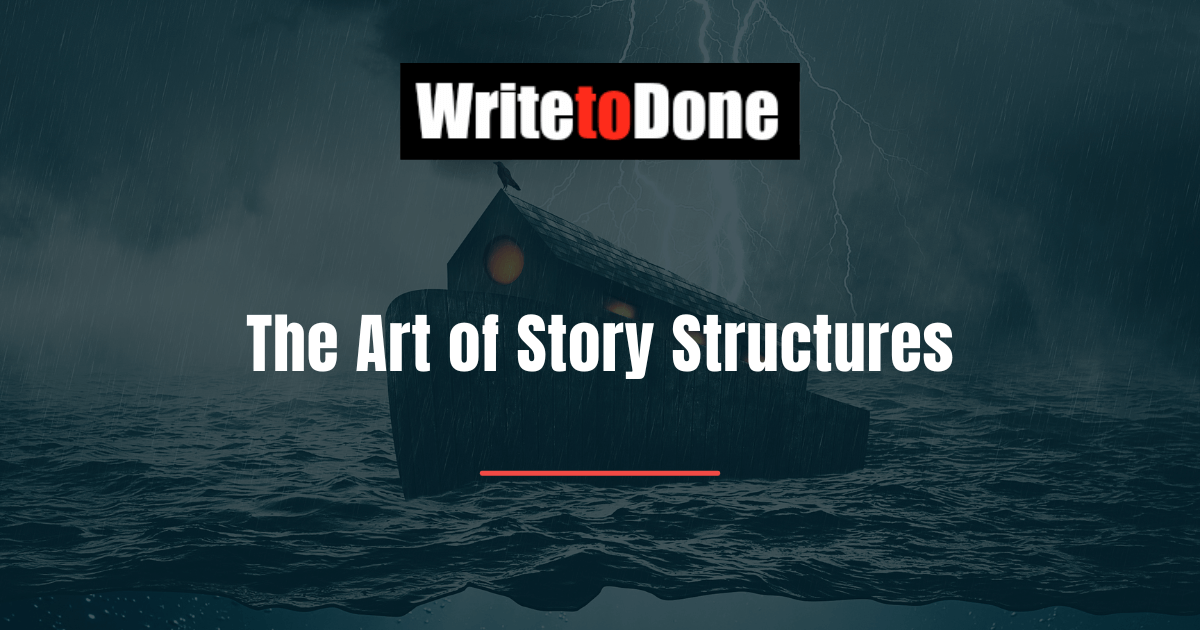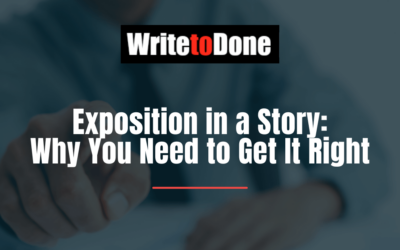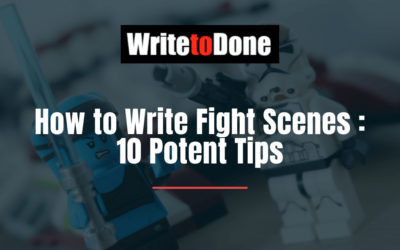Picture this: In a sudden burst of divine inspiration, you find yourself visited by the ancient Muse who bestows upon you the perfect idea for your very own novel. It’s every author (and aspiring author’s) dream. But once the initial adrenaline wears off, it can quickly morph into a nightmare. Between the scattered plot points and fuzzy technicalities, it’s difficult to imagine that any organized form of writing can come from this creative vision.
Enter the art of story structures.
Story Structures: What Are They and How Can They Help?
In essence, a story structure is the roadmap for your story.
At their best, story structures help you to visually align the events of your novel in an organized and logical sequence, making it easier to draft the story itself by defining the important plot points.
There are various kinds of story structures, each suited to a different type of writer, but all of them generally consist of:
- a conflict
- a climax
- a resolution
Next, we’ll take a closer look at these common elements.
The Elements of Story Structures
Keeping in mind that there are multiple methods that authors use to structure and outline their stories, we’ll focus on some of the main aspects that remain the same throughout each technique.
- The Opener: This is perhaps one of the most important aspects of any story. In this portion, you identify both the protagonist and the driving force of the entire plot. Be it a quest, a problem, or a challenge, this force must be strong enough to propel your character through the entire story and compel your readers to stick around till the very end.
- The Catalyst: This is the event that gets the ball rolling. The catalyst is the moment where the problem becomes so undeniable that it finally forces the protagonist to act in order to avoid the worst possible result or consequence. The stakes should be high.
- The Tension Grows: With the stakes floating comfortably in the upper atmosphere, it’s time to take them to the stars. This portion of the story should involve a series of crises that fit logically into the plot while progressively getting worse. These are what motivates your protagonist to continue fighting the problem and working towards the desired solution.
- The Climax: Many people are tempted to mistake the climax for the end of the story, but it’s far from it! This is the point in the story where things have escalated to their absolute worst. Hopeless and faced with utter failure, this is a turning point for the protagonist; they must decide whether to continue on against all odds or to give up and accept the worst.
- The End: It all comes down to this. Using what they’ve learned along the way, your protagonist must act and either succeed or fail. Ideally, an ending will both satisfy the reader as they complete their journey with your protagonist and leave them wanting more.
Seven Story Structures
One: Dean Koontz’s Classic
This structure is simple enough to be ideal for writers who prefer a loose approach to outlining. It consists of only four steps:The sooner the trouble, the better. The moment the stakes are high enough to carry the plot of your novel, throw your character head-first into the thick of it. Before you take this high-dive, though, make sure you’ve developed your character into someone your readers are genuinely invested in.
It’s all downhill from here. Everything that your character does should inevitably make their dilemma even worse. It’s important to make sure that each problem proceeds logically from the one before it, but the deeper the trouble, the better.
Enter utter hopelessness. This is what your protagonist has been training for. Everything they learned in overcoming the previous obstacles should come into play here as the reader (and maybe even you yourself) wonder how the protagonist is ever going to escape the inevitable.
Success or failure, against all odds. Loyal readers expect an ending that neatly ties up the story. Whether that ending is one of victory or disappointment depends on the individual circumstances of each story; either way, this portion should provide a sense of closure for your readers and the protagonist.
Two: In Medias Res
Medias Res is a Latin phrase that literally translates to “in the midst of things.” Essentially, you’re throwing your reader straight into the action. Descriptions of the backstory and setting can be gradually incorporated as the story progresses. This story structure focuses on getting the reader invested from the outset.
After the initial shock of immediate action, the story structure remains relatively simple:
- rising action
- backstory
- climax
- denouement (falling action)
- resolution
Three: The Hero’s Journey
A classic plot structure popular across a wide range of genres, the Hero’s Journey consists of twelve basic steps:
- Ordinary World: Simply put, you’re defining your hero’s sense of normalcy by describing their life prior to the quest.
- Call to Adventure: This is where things start to go south. The hero is forced out of their comfort zone by being confronted with a problem they can’t ignore…
- Refusal of the Call: … but which they try to ignore anyway. Luckily, this initial refusal is designed to be refuted and ultimately overturned.
- Meeting the Mentor: After the hero is persuaded to go on their journey, they realize they’re altogether too inexperienced to even dream of success. Enter the mentor. From wisdom to motivation and everything in-between, the mentor is the one who ensures that the hero is ready to face all of the challenges before them.
- Crossing the First Threshold: Thoroughly committed to the journey, the hero takes the first steps in leaving their comfort zone to enter the world beyond.
- Tests, Allies, Enemies: This portion focuses on how the hero interacts with the world and the people around them. Whether they’re getting into trouble, getting others out of trouble, or being saved from trouble themselves, this establishes the hero’s place in this new world and their social standing among this world’s inhabitants.
- Approach to the Inmost Cave: The hero is approaching the final destination of their quest. Here, they’re nearing the end as they prepare to fight the villain.
- Ordeal: This is the hero’s biggest test. The most critical point in the story, this is where the hero is knocked down to their lowest point and must truly demonstrate their ability to overcome hardship. More often than not, this is not the climax of the story!
- Reward: This is what the hero has fought for the entire journey. These are usually physical objects that hold the key to defeating the villain once and for all.
- The Road Back: Here, the hero must directly face the consequences of all of their previous actions. Evil has not yet been defeated, and the hero is forced to confront it once again if they wish to return to the “normal” world.
- Resurrection: The hero now faces their final test. This is the true climax of the story. Using everything they’ve learned up to this point in their journey, the hero is finally ready to face the greatest evil that stands between them and their happy ending.
- Return with the Elixir: The hero triumphantly returns home. However, the journey has changed them; they are not the same person that left their “ordinary” world, but they are better off nowbecause of this.
Four: The 7-Point Story Structure
This technique tends to work best if you first define your resolution and then work backwards from there.
- Hook: the starting point of your protagonist.
- Plot Turn 1: introduces the driving conflict.
- Pinch Point 1: adds pressure to the conflict, thus motivating the protagonist to continue the journey.
- Midpoint: an active response to the conflict.
- Pinch Point 2: the pressure on the protagonist intensifies.
- Plot Turn 2: the protagonist is now prepared to face the conflict and reach a resolution.
- Resolution: everything has led up to this moment, and the protagonist is no longer the same person who began the journey.
Five: Randy Ingermanson’s Snowflake Method
This method is ideal for those who prefer to work with a detailed outline before they begin the actual drafting process.
- Write a single sentence summary of your novel.
- Expand this sentence into a paragraph summary that includes major events.
- Write a page-long summary of each character’s story and personality.
- Expand each sentence in your paragraph from Step 2 into its own paragraph.
- Through the perspective of each character, write a one-page summary of the plot.
- Expand each paragraph from step 4 into a full-page rundown.
- Expand your character descriptions into character charts.
- List every scene you’ll need to include in your story using the summary you wrote in Step 6.
- Write a multi-paragraph description of each scene you’ve identified.
- Finally, write the first draft.
Six: The Three-Act Structure
Widely popular both in current and ancient times, this is perhaps the simplest method of outlining any drama.
Act 1: The Set-Up
Here, you’ll establish the setting and introduce your main characters, thereby defining the direction of the rest of the story.
Act 2: The Confrontation
The protagonist is faced with a problem that initially appears easy to solve, but grows increasingly more complex until it seems impossible for them to attain what they really want.
Act 3: The Resolution
With the stakes at their highest, the protagonist must use the skills they have developed over the course of their journey to discover a solution to their problem.
Seven: James Scott Bell’s “A Disturbance and Two Doorways”
Bell introduces this concept as a plot centered around and driven by three main events:
- A Disturbance: Something early in the story upsets the status-quo, thereby changing the protagonist’s life as they know it.
- Doorway 1: This catapults the protagonist into the middle of the story, ensuring that there is no going back.
- Doorway 2: The protagonist approaches the final battle, no longer able to back down as they are faced with a situation that typically results in disaster.
While there are a wide variety of story structures available for consideration when you’re planning your novel, it’s important to choose one that works for you. Keeping in mind your writing habits and preferences, you’ll be able to discover the outlining process that is sure to help you develop a clear and concise plot that will keep your readers engaged and invested from start to finish.


















